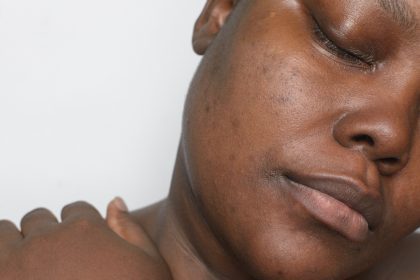As we age, gray hair is often seen as an inevitable sign of growing older. For many, it’s a reminder of the passage of time. However, in a world where aging has become a primary focus for medical research, new discoveries in the realm of hair care are turning conventional wisdom on its head. Can gray hair be reversed? Recent breakthroughs in science suggest that the process, while deeply rooted in biology, might not be as irreversible as previously thought.
The biological mechanism behind gray hair
The onset of gray hair is typically associated with the natural aging process, but there is more to the story than just aging. Understanding why our hair turns gray begins at the cellular level, where melanocytes—cells responsible for producing pigment—are at work. As we grow older, these cells gradually lose their ability to generate the pigment that keeps our hair its original color.
A pioneering study published in Nature has shed light on how this pigmentation loss occurs. Conducted on laboratory mice, the study explored the mechanics behind gray hair and how melanocyte stem cells become immobilized within the hair follicle. These stem cells play a crucial role in replenishing the hair’s pigment-producing cells. However, as these cells lose their ability to migrate properly, the production of pigment slows, resulting in gray or white hair.
Are these findings applicable to humans?
Though the study’s results were based on animal models, the findings offer valuable insights into the mechanisms of hair graying in humans. The biological process observed in mice is similar to what occurs in human hair follicles, but researchers caution that it’s still too early to predict whether these mechanisms can be replicated in human treatments.
Despite the promising nature of the findings, direct applications to human beings remain a challenge. However, the discovery of a fundamental biological issue—the immobilization of melanocyte stem cells—opens new avenues for potential treatments. Scientists are now looking at ways to restore the movement of these cells to rejuvenate hair pigmentation.
The possibility of reversing gray hair
The question of whether gray hair can be reversed remains open. The study provides critical information on how gray hair forms, but there is no clear answer yet. Researchers are optimistic, though, that the knowledge gained from this study could lead to breakthroughs in reversing or even preventing gray hair. By targeting the immobilized stem cells, future treatments might be able to restore the ability of these cells to produce the pigments needed to maintain natural hair color.
While we cannot expect an immediate solution, the possibility of a treatment that could restore hair’s natural color holds enormous potential. Research in regenerative medicine is advancing rapidly, and restoring melanocyte cell function could become a focal point of future treatments for gray hair.
Current solutions to gray hair
Until a treatment is available to reverse gray hair at the cellular level, individuals seeking solutions can turn to more conventional methods for managing or disguising their gray strands. While these options do not address the root cause of graying, they provide immediate relief for those who wish to cover up their gray hair.
- Hair dyes: One of the most popular methods for dealing with gray hair is through the use of hair dye. From permanent to semi-permanent options, these products offer a variety of choices for people looking to temporarily return to their natural hair color.
- Shampoos and conditioners: Some specialized products are designed specifically for gray or silver hair. These shampoos and conditioners work to enhance the appearance of gray hair, keeping it vibrant and healthy while also helping manage any brassy undertones.
- Natural remedies: For those who prefer a more natural approach, herbal and plant-based remedies such as henna are often used to cover up gray strands. These products are typically less harsh than chemical dyes, making them a gentler option for individuals seeking to avoid synthetic products.
What the future holds: Emerging treatments for gray hair
The path to reversing gray hair may not be as distant as it seems. The identification of the biological mechanisms behind hair graying provides scientists with a critical foundation on which to build. If future research can confirm that reversing the movement issue of melanocyte stem cells can indeed restore pigmentation, we could see the advent of treatments that might stop or even reverse the graying process entirely.
Additionally, the field of gene editing has opened up possibilities for altering genetic factors that influence aging processes, including the production of melanin. While still in the early stages, gene therapy could one day provide a solution for people who are looking to preserve their natural hair color as they age.
Will gray hair treatments be available soon?
For now, while treatments to reverse gray hair are not yet on the market, the current trajectory of research offers hope for the future. Scientists are exploring a range of techniques to address hair graying, from stem cell therapies to gene editing. It’s likely that within the next few decades, we could see significant advancements in the area of hair restoration, allowing people to maintain their original hair color well into their later years.
Conclusion
Gray hair is often viewed as an unavoidable sign of aging, but recent research suggests that this may not necessarily be the case. With new insights into the biological mechanisms responsible for hair graying, the possibility of reversing or preventing this natural process seems more attainable than ever. While effective treatments are still a few years away, these breakthroughs offer hope for those seeking to maintain their natural hair color as they age.
In the meantime, individuals looking to manage their gray hair can rely on a combination of hair dyes, specialized products, and natural remedies. As science continues to advance, the dream of a permanent solution to gray hair may one day become a reality.

















